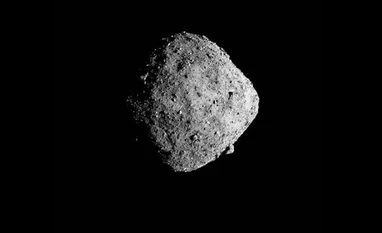Earth will get a second moon in the form of a tiny asteroid called 2024 PT5. The asteroid will be a mini-moon orbiting the planet for about two months between September 29 and November 25 before heading back to its original gravity.
The American Astronomical Society first shared the information through research notes.
How to watch the mini-moon?
One wouldn’t be able to see the mini-moon with naked eyes as it is made up of a small dull rock. But it can be seen with professional equipment. Watching it through binoculars or a home telescope is also difficult.
The host of the Awesome Astronomy podcast, Astronomer Dr Jennifer Millard, told BBC that “Professional telescopes will be able to pick it up. So, you’ll be able to look out for lots of wonderful pictures online of this little dot moving past the stars at great speed.”
Nasa's Atlas spotted mini-moon
The asteroid was first spotted by Nasa’s Asteroid Terrestrial-Impact Last Alert System (Atlas) on August 7 and it is around 33 feet wide. It is coming from an Arjuna asteroid belt, which is a diverse jumble of space rocks orbiting the sun close to our planet.
The asteroid 2024 PT5 will enter orbit on September 29, and is likely to leave on November 25. The astronomer Millard also stated, “It's not going to complete a full revolution of our planet, it's just going to kind of have its orbit altered, just twisted slightly by our planet, and then it'll continue on its merry way."
Such asteroids pass our planet at a distance of around 2.8 million miles (4.5 million kilometres). If an asteroid like this moves at a slow speed of roughly 22,00 mph (3,540 kmph), the Earth's gravitational field can exert considerable influence, causing to exert a considerable influence causing considerable influence it to be trapped temporarily. This is exactly what happens with this asteroid spending two months orbiting the planet.
More From This Section
Dr Millard also mentions that “This story highlights just how busy our solar system is and how much there is out there that we haven't discovered because this asteroid was only discovered this year. There are tens of thousands, if not hundreds of thousands, of objects out there that we haven't discovered and so I think this highlights the importance of us being able to continually monitor the night sky and find all of these objects.”
It is not the first time that mini-moons were spotted. Some of them even pray for repeat visits. The 2022 NX 1 became an ephemeral companion to our planet in 1981 and again in 2022. Scientists also believe that the 2024 PT5 will make a return to Earth's orbit in 2055 again.
)